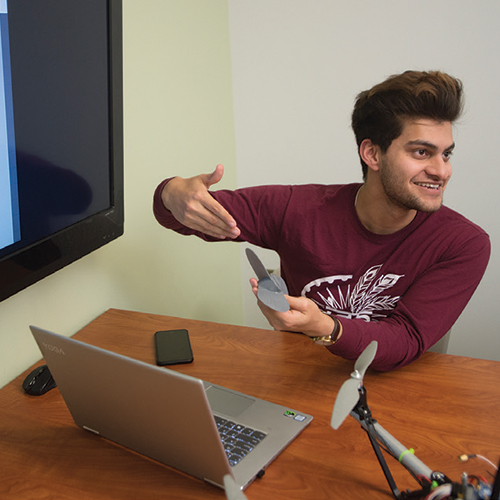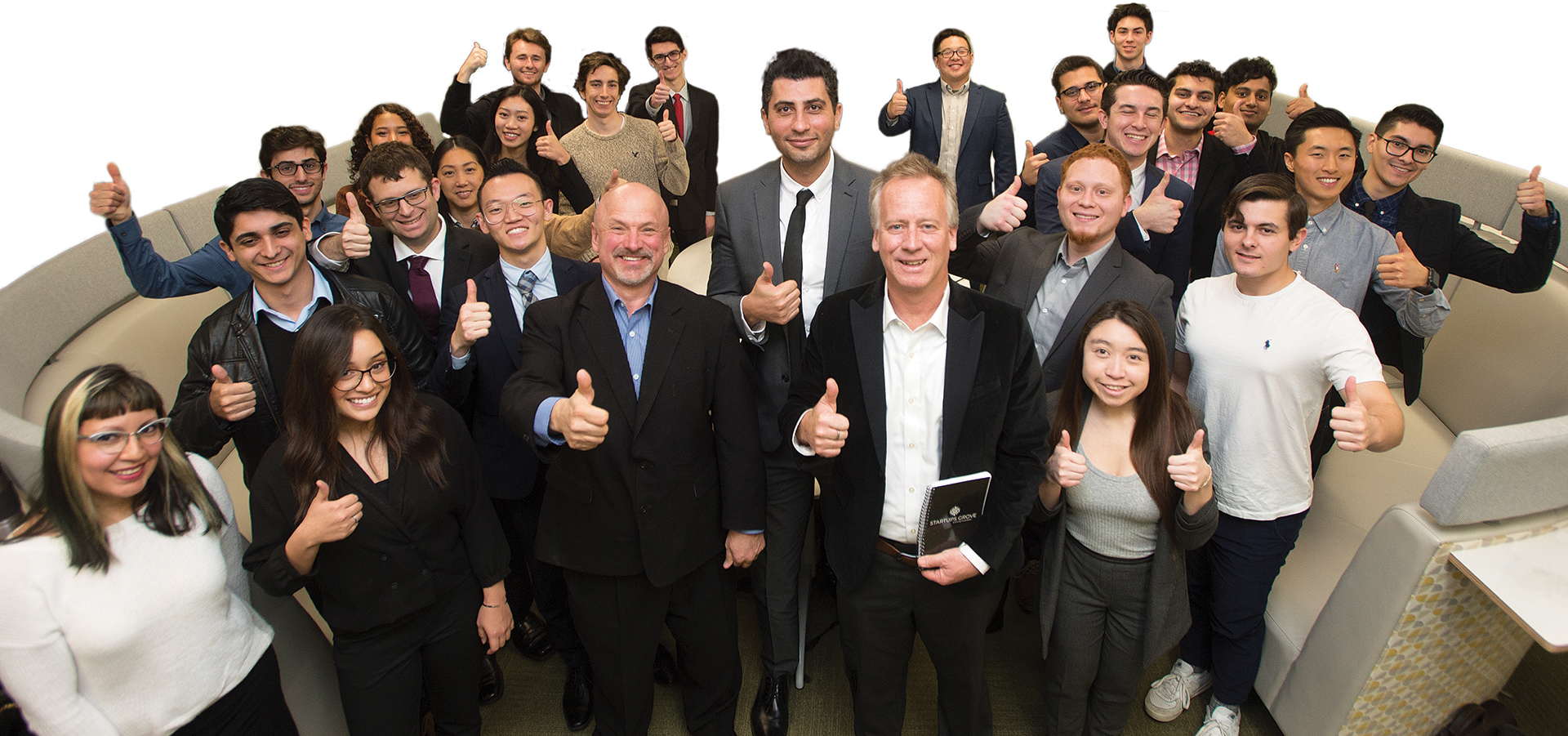On a Mission
Partnership with NASA Brings Product Ideas to Life
By Melanie Johnson
Improving lives with new products may sound like a lofty goal, but for Cal Poly Pomona students participating in the NASA-CPP Business Startup Program, it’s the mission.
From an affordable and portable microscope to a more efficient fan blade to a device that monitors posture, students are tapping into their education and know-how to translate NASA technology into new products that could be marketed to the masses.
“Our main goal is to improve lives one technology at a time,” says H. Erkan Ozkaya, business professor and director of the program. “We work with wonderful technologies, and we want to give a second life to those technologies by creating products that everybody can use.”
NASA-CPP also offers students an opportunity to gain the kinds of skills that translate into jobs at some of the top companies in the country and admittance into highly competitive Ph.D. programs, while also fueling their passion for entrepreneurship and technology.
“It’s about a multidisciplinary experience, a polytechnic approach, learning by doing and all of that,” Ozkaya says. “Our biggest achievement is creating an environment for people who are passionate about technology and entrepreneurship to come together and create fantastic products. That, I think, encapsulates what Cal Poly Pomona is all about.”
Building Something Great
At weekly meetings, students from the various project teams give a progress report on the development of their products. The microscope team discusses its design woes. The team working on the posture-monitoring device talks colors and material for the T-shirt that houses wearable tech.
The program, which has about 55 students and five faculty members, is run like a company in which students are key players. They’re expected to give and receive suggestions about product development, conduct market research and competitor analysis, and flex their problem-solving skills day in and day out.
For Alyssa Harrison, a visual communications junior, solving problems and puzzles is what drives her. Her role is to help with the overall design of the products, graphics and marketing.
“I am getting more hands-on experience instead of just working with theory,” she says. “I like that I am building physical things and seeing them go through different phases over a long period of time. It gives me a greater understanding of what it is like in the real world and the job force.”
Johnathan McGowan, a computer information systems senior, says the program gives him something he couldn’t get elsewhere.
“I want to be with like-minded individuals to build something that’s going to be great,” he says. “A lot of clubs on campus don’t normally have opportunities where you can work continuously on a project, and you don’t really get to work for a long time in the classroom itself. I was looking for a community that I could join to build products and work on those products throughout my time at school.”
“I think our biggest achievement is creating an environment for people who are passionate about technology and entrepreneurship to come together and create fantastic products. That, I think, encapsulates what Cal Poly Pomona is all about.”
- H. Erkan Ozkaya, business professor
A Polytechnic Education
Eddie Bader, a senior business student, already owns a tech company.
The business team leader says that he’s using what he learns from NASA-CPP to improve his business. One of his most memorable experiences was being on a teleconference call with NASA engineers and scientists to get feedback on students’ product ideas.
“They are really on a next level,” he says. “They are thinking of things we never thought about or they’ve been down that road before and they are able to identify pitfalls. That really reduces the learning curve for us. It gives us an opportunity to work through some of those issues at a quicker pace then we’ve done before.”
For Elnaz Ghiaei Shamlou, an electrical engineering junior and the lead on the wearable engineering and testing teams, the program has taught her how to work in a team, connect with people from diverse backgrounds and be professional.
“The products we build are there to help people to live a better life,” she says. “Maybe I could never be a doctor, nurse or firefighter, but as an engineer, I am impacting people’s lives, not just people around me, but worlds away.”
Physics Professor Ertan Salik, who serves as the technical supervisor, sees the program’s great potential for growth and success.
“In traditional research, you determine a problem to work on and typically, in my field, you do some laboratory research and you publish your results,” he says. “In this program, something else happens. A real product is being developed.”
That experience developing products has been stimulating and exciting for the students involved, and they have learned from one another, he says.
“Great products cannot be developed in isolation,” he says. “You need input and feedback from various backgrounds, various expertise levels. And that’s what the NASA-CPP program achieves, in my opinion, on a small scale, which gives students a great preparation for their future.”
(Photo Caption: The NASA-CPP Business Startup Program includes faculty and students from several colleges. The program also seeks advice from industry professionals.)

Creativity, Discovery & Innovation
Our academic programs connect theory, practice and research, and are focused on creativity, discovery and innovation.
